Why Is My Gluten Free Bread Gummy?
Gummy, undercooked, doughy – all words used to describe the same thing – gluten free bread that has this very unappealing look and taste. Welcome to the second topic in our series, Your Gluten Free Bread Problems, Answered, "Why is my gluten free bread gummy?"
The first post is here in case you missed it - ‘why is my gluten free bread so dry and crumbly?’
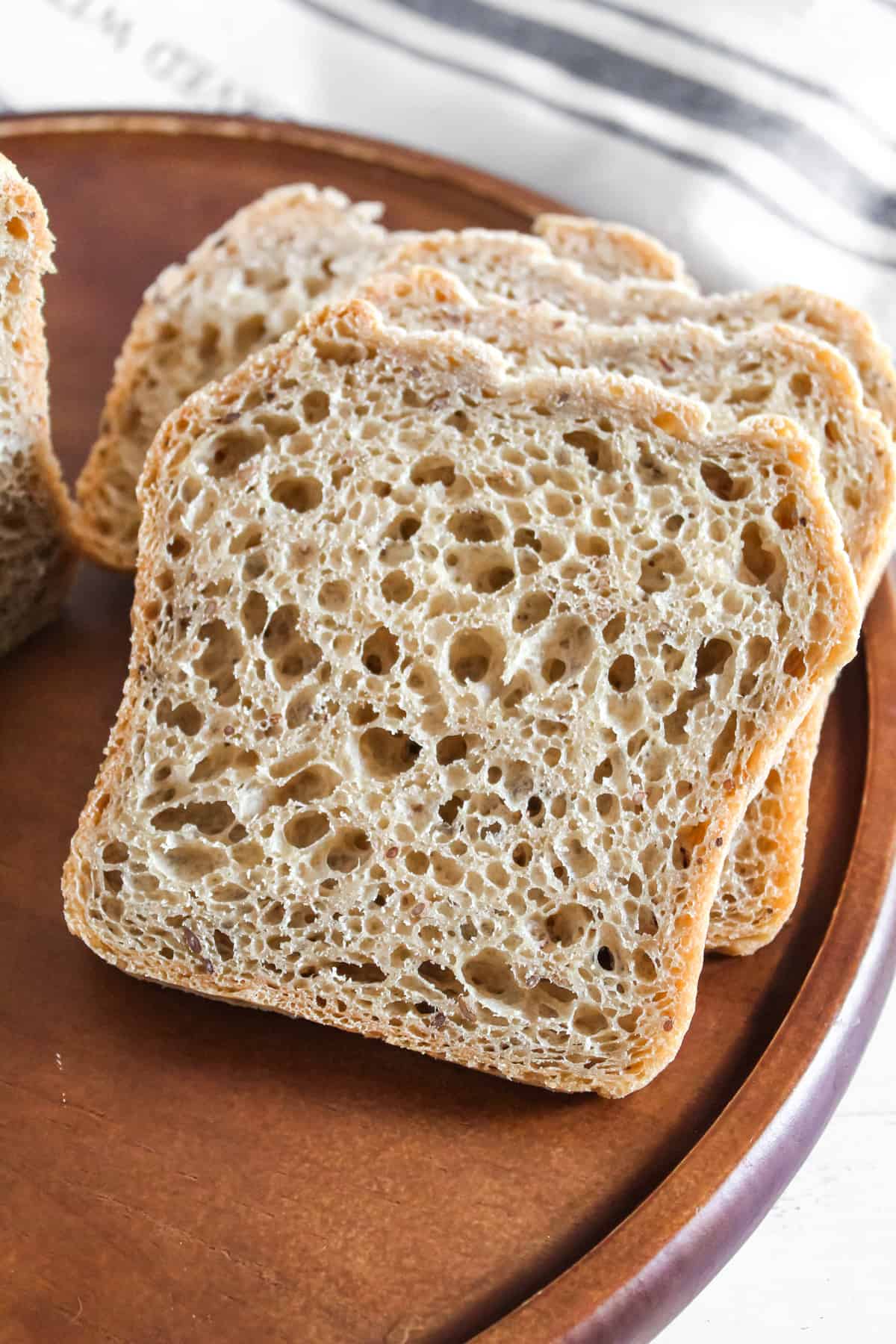
Looking for more gluten free baking help? Check out this article on gluten free thickeners, this one on coconut sugar substitutes, and this one on agar agar substitutes.
As an affiliate partner of various brands and sponsored content, Zest for Baking may earn commission on qualifying purchases. Disclaimer
Jump to:
Gummy Bread: Key Take-Aways
Gumminess is an issue that makes gluten free breads almost impossible to eat. It can happen to any bread - sandwich bread, gluten-free sourdough bread, even in quick breads like this gluten-free banana bread recipe. It’s that terrible gummy texture that you don’t notice till you go to take a bite or tear into that roll.
Here are the biggest issues and the best way to solve them:
Types of Gluten-Free Flours Used: Different flours can produce different results, especially when substituting. Nut flours such as almond flour behaves differently than other flours like coconut flour.
Amount of Water Used: Breads with too much water can sometimes become gummy.
Substitutions: Sometimes using substitutions like flaxseed meal or chia seeds in place of eggs or substituting a flour mixture can impact the texture of the bread.
Preparation: If the ingredients are not at room temperature, or the bread dough is not mixed long enough or the batter has not been given a rest time, the end result may be a gummy texture.
Baking Temperature: The internal temperature of the gf bread should reach between 205-210F. Quick breads should be fully baked with no batter left on a toothpick.
Why is My Gluten Free Bread Gummy?
Gluten free bread, even this low carb bread, can take on a gummy taste or appearance for a number of reasons... Sometimes it happens because the blend of flours to starches is out of balance. A recipe with a higher starch content can sometimes turn into a gummy bread. Though if you're using a tried and true recipe, this is likely not the case.
Hydration levels in the bread can also be a factor. A bread with too much liquid can sometimes result in a gummy texture.
More frequently, it’s an easier problem like mixing time, baking time or cooling time. If the bread is not mixed adequately, baked long enough and to the correct temperature, or cooled properly, the results can be a gummy, almost underbaked texture.
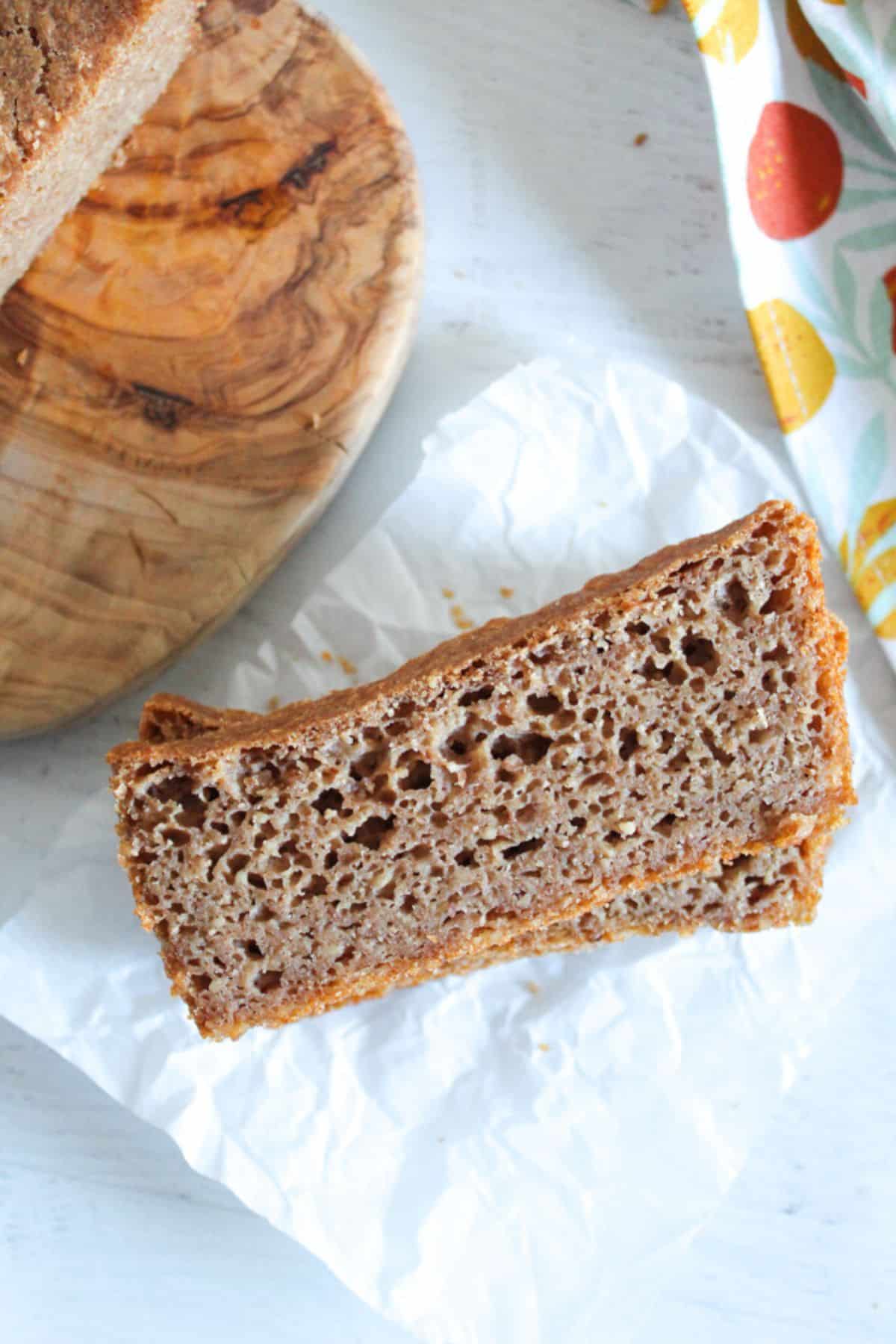
Solution to Gummy Bread
The solution to a wonderfully textured, non-gummy bread or gluten free baked good starts with the recipe and then ends with the final product and the cooling process. So starting with the recipe…
1. Starch to Flour Ratio
The starch to flour ratio the recipe calls for can lead to gummy results. If the recipe you are following is more than 50% starches, you might have a very gummy loaf of bread (not always, but this could be the issue).
Think of it this way: the total flour / starch combination in your recipe is 100%. There should be no more than 20% - 25% of each type of starch in a recipe. So tapioca starch, cornstarch, potato starch or arrowroot starch. If the recipe calls for 1 cup of brown rice flour, ½ cup of sorghum flour and ½ cup of millet flour; the starch might be something like ½ cup potato starch and ½ cup tapioca starch. (This is just an example, true recipe measurements would be by weight with a digital scale.)
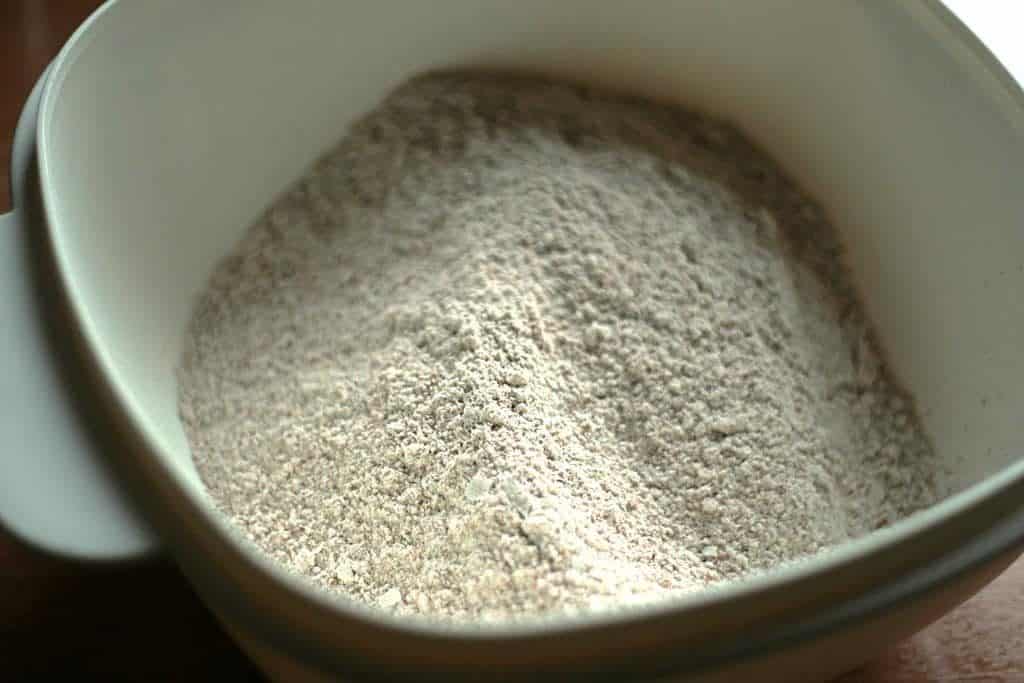
2. Lighter vs. Heavier Flours
Speaking of tapioca starch… sometimes tapioca flour can produce a gummy loaf. Even if it’s within the 20% range. The reason? Lighter flours. Something as light as sorghum flour or white rice flour sometimes needs a balance with a heavier flour like millet flour to prevent the tapioca starch from making the bread gummy.
Gummy texture can also happen with the gluten-free flour blend. Certain gluten-free flours may produce a more gummy textured bread than other.
3. Hydration Levels
Hydration isn't just the water content, it also includes the wet ingredients in a recipe - the eggs (whether whole eggs or egg whites), milk, even honey or other liquid sweeteners. Too much liquid in a recipe could mean a gluten free batter that can't absorb all the excess water leading to a gummy result.
4. Measuring Gluten-free Ingredients
When measuring dry ingredients, use a digital such as this one that measures in grams. For wet ingredients, use a measuring cup.
5. Mixing the Gluten-free Batter
When you mix gluten-free batters, mix them well to create a lighter, air-pocketed batter. Gluten free bread dough is not like normal bread dough (even this chia bread that is similar to gluten bread!), it benefits from being well mixed. 3 -5 minutes on medium speed in a stand mixer is not uncommon.
6. Pan Size
The pan size also plays a part in gluten free baking. Sometimes even the slightest substitution in pan – an 8" x 4.5" for a 9" x 5" can make a world of difference. You will have a greater success with these pans or a Pullman pan. The bread has a tall rise, doesn’t fall and bakes up nice every time.
The last recommendation is probably the hardest to do...
7. Baking and Cooling Time
After the bread tests done with your instant read thermometer (between 205 - 210 F), turn off the oven, open the oven door and let it sit in there and cool for about 5 minutes before removing it to a wire rack. Allowing the bread to hang out in the oven for a bit might be just the thing to help it firm up and completely avoid a gummy texture.
After it's cooled in the oven, remove the bread from the pan and let it finish cooling on a wire rack. Let it cool completely before cutting into it. Bread hot from the oven has a tendency to be gummy, so allow it to cool at least 2-3 hours at the very minimum before slicing it. The longer you can wait, the better.
Better Bread Texture
Despite the difference in gluten free bread compared to gluten bread, gluten free bread should not be gummy or have an undercooked center. It IS possible to have a wonderful tasting loaf, it just requires some troubleshooting. In the next post, we’ll look at xanthan gum and how to go without it in gluten free breads.
Also check out the Masterclass below where we dive into this topic to prevent gummy bread for good!

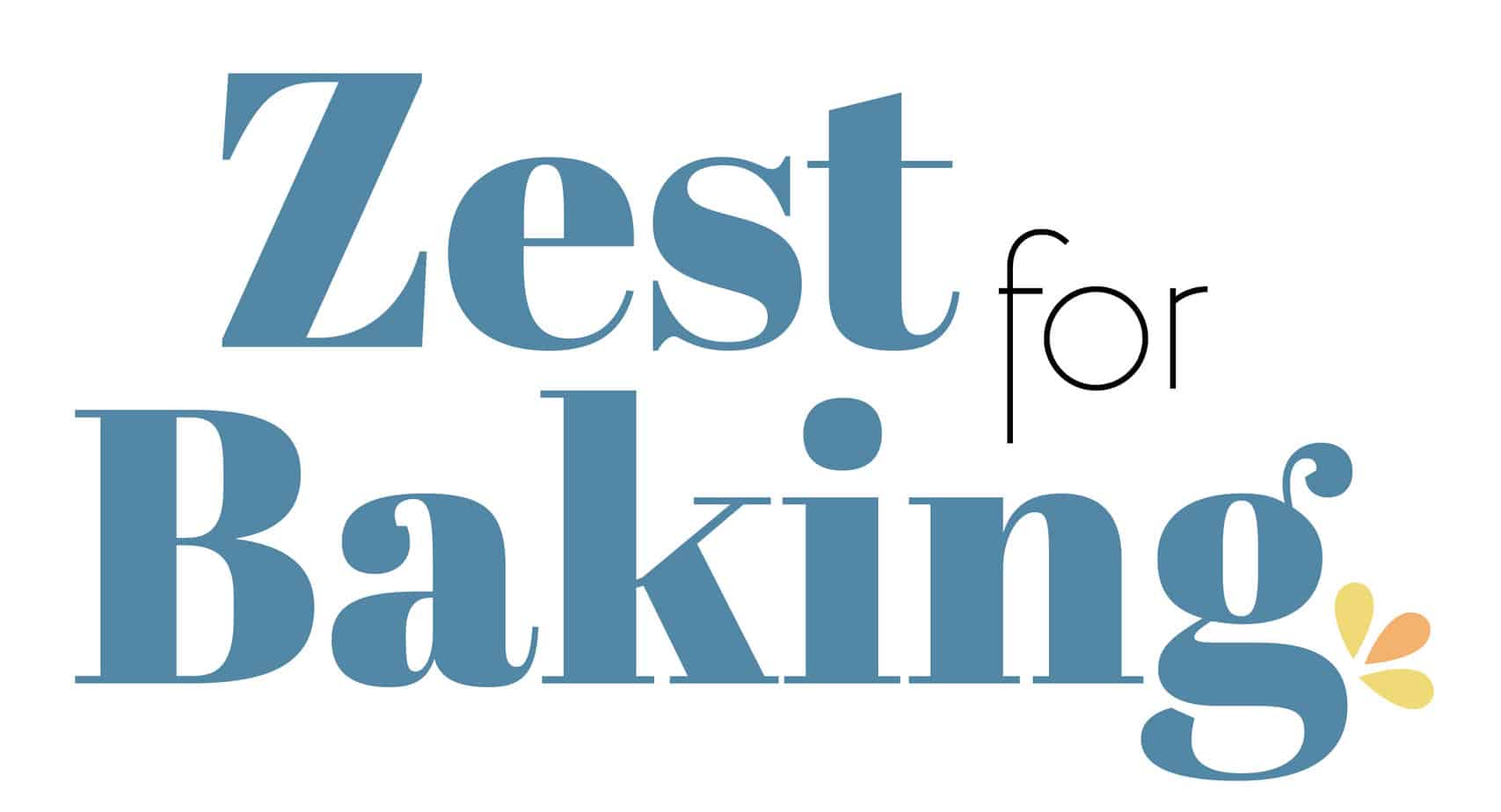
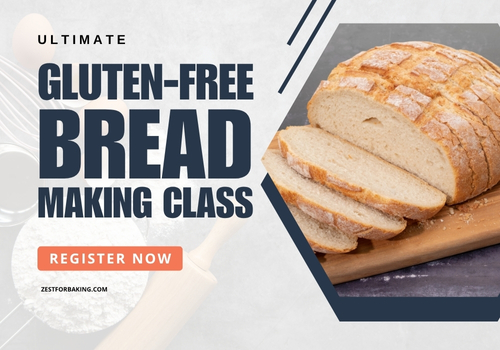
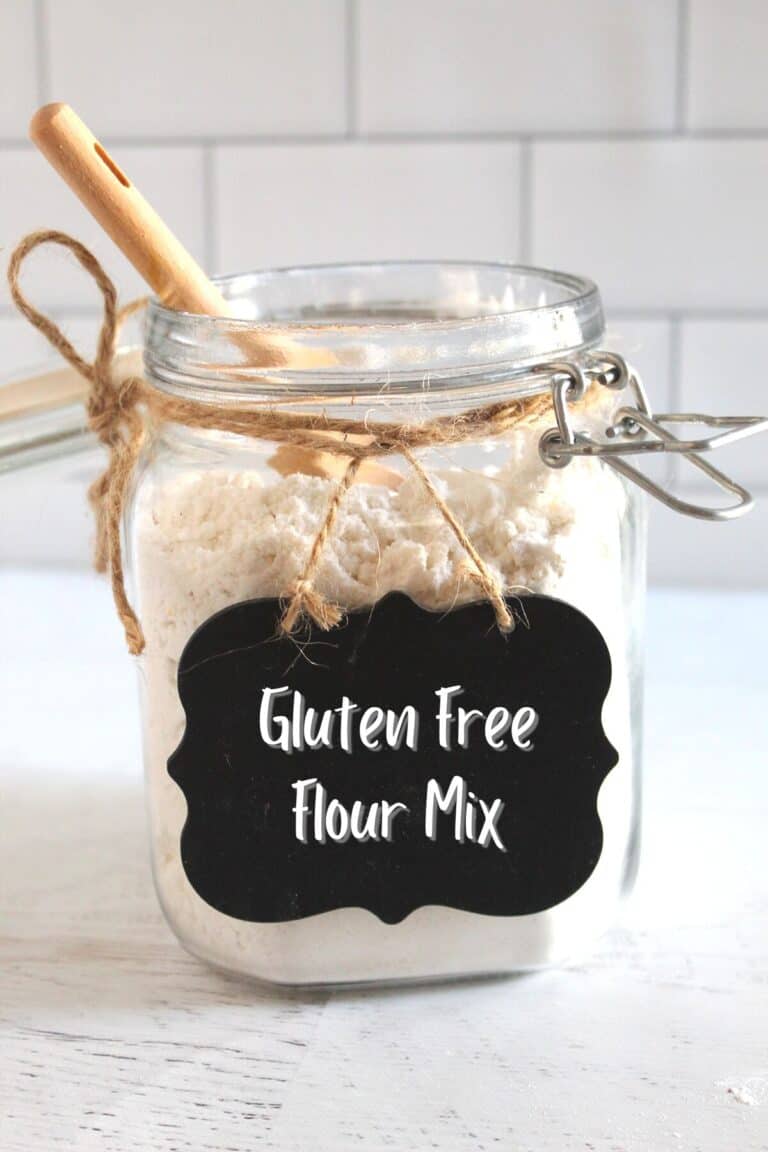
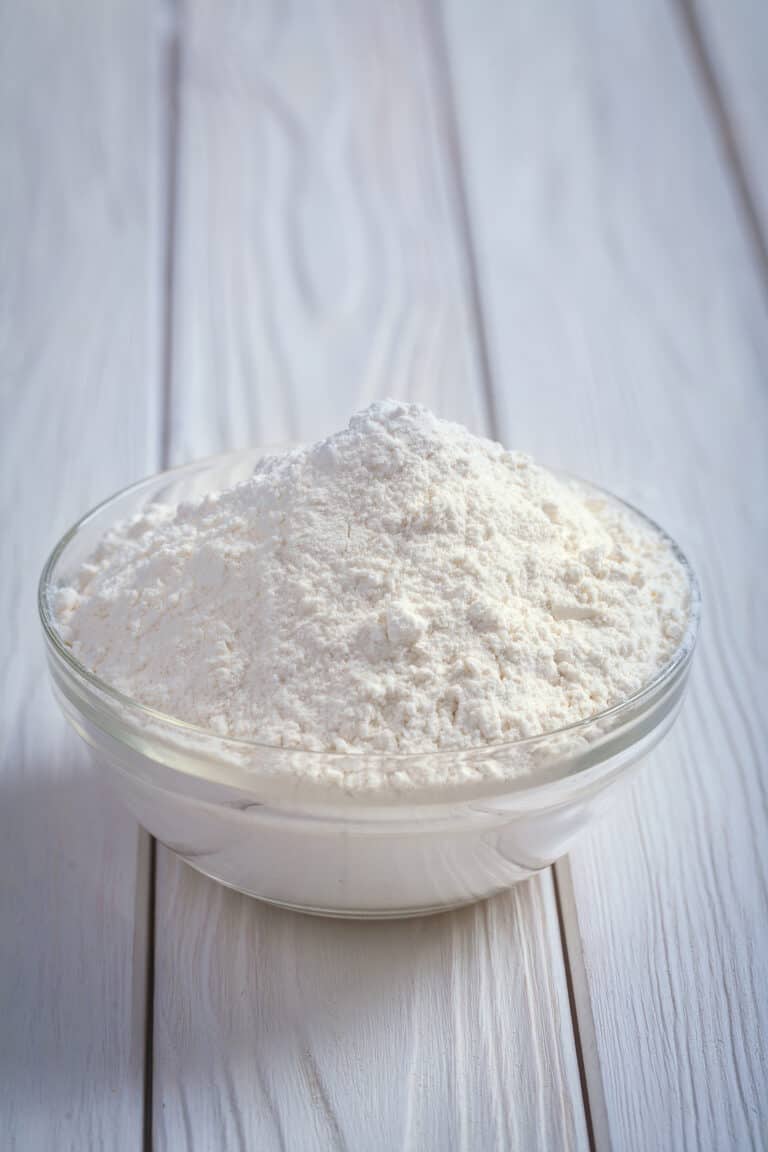
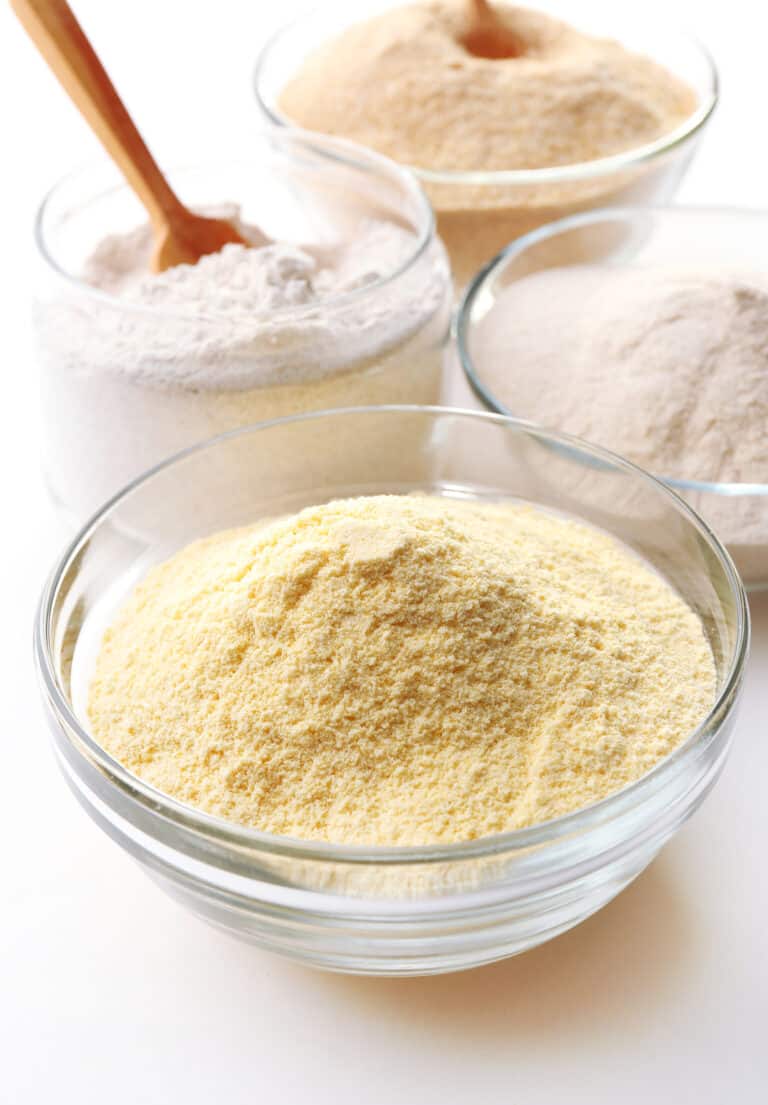
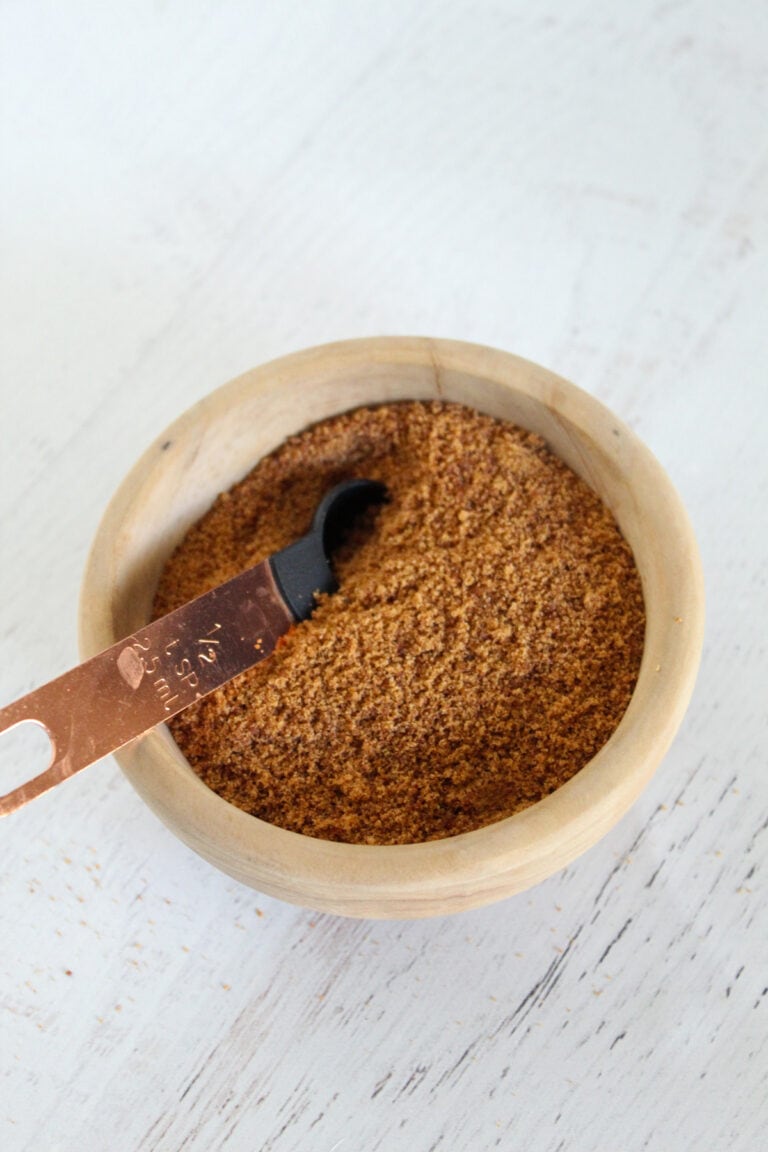
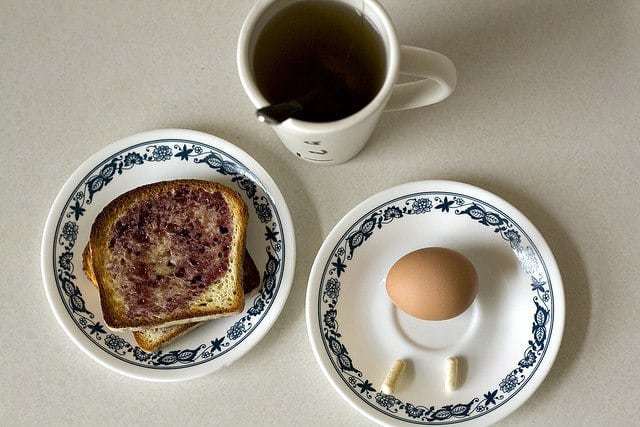
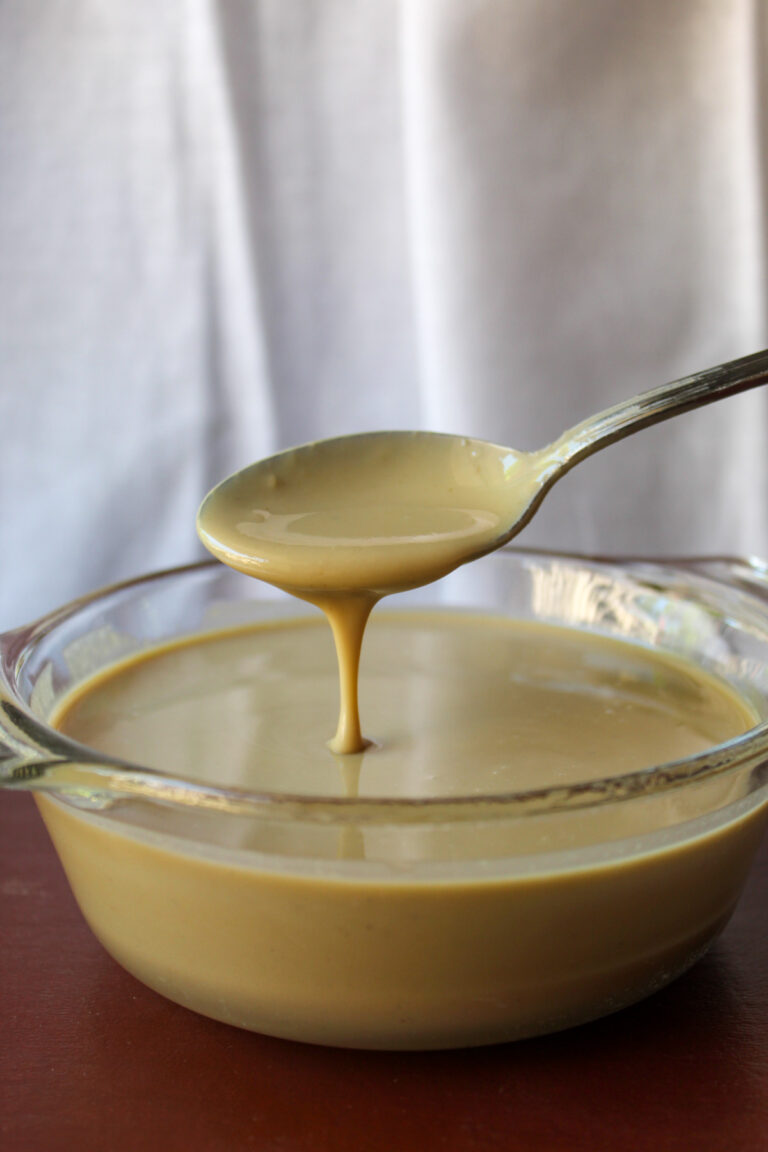
Hi there- I make high protein quick breads and muffins primarily with chickpea and almond flour. I have a dry flour total of 2 cups ( 1.25cup almond, 0.50 cup chickpea, and 0.25 cup protein powder). I'm looking for better rise. Gumminess not so much the issue. Should I increase baking powder to 2 tsp? I'm afraid of that baking powder metallic taste when you add too much. Would baking soda be better? Should I cut back on almond flour and work in oat flour?
Hi Shireen,
Thanks for asking, so yes, try a bit more baking powder and also try letting the batter rest for 30 minutes before baking, that can help with hydration, which makes for a better rise.
Christine
Even though this article is from a few years ago, it helped me finally figure out a pesky problem today. I've been making the same GF bread for about 20 years....it's simple and works really well for sandwiches. In the last few months, it's been turning out so gummy, I can't even slice it...or eat it. Reading this article about the weight and texture of flours made me recognize that the texture of rice flour has been changing, becoming much finer and lighter than the coarsely ground hardy variety I've been buying forever. Once I recognized it, I was able to adjust the ratio of rice flour to tapioca flour (drastically) and finally have my reliable bread back. Great article...thank you!
Hi Cathy,
Oh I'm so glad to hear this.
It's great when we get to the root of the problem. 🙂
Christine
What is your preferred store bought pre-mixed GF Bread Flour mix?
And do you need to add the X Gum if using pre-mixed Bread Flour or is that part of the Bread Flour mix?
Hi Becky,
Pamela's is pretty good https://amzn.to/3RWoNnO and no, no ned to add additional gum if it's already in the mix.
Christine
Hi,
Love this info! Thank you!
I frequently try baking muffins and always gummy!
Last time it was all oatmeal for the base, maple syrup, an egg, and blueberries.
Delicious...but super gummy... help?
Hi Sherri,
Glad it was helpful 🙂
So it couple be a couple things - it may just need a few more minutes of baking time or it could be that the oven is too low a temperature.
The baking time is most likely the culprit though - let me know if that solves the issue.
~Christine
Thank you for writing this article, it is very informative and helpful.
I often have the terrible gummy problem with my gluten free quick breads: zucchini bread, pumpkin bread, applesauce cake or banana bread. I confess I use Pamela's Blend all purpose mix as my go-to cup for cup replacement. I have tried to make sure I am baking it fully and even a little extra, so I suspect it is a flour/starch ratio issue.
Any tips specific to quick breads, not only flour/starch ratio but also with leavening agents or how to account for the moisture in the vegetables?
Hi Liz,
Thank for asking - so it's tough to pinpoint exactly what it may be - are you measuring the flour by weight and letting the batter rest for 30 minutes before baking? Those 2 things may solve the problem. But it could also be just a mismatch in flour/starch, as you said. Are you using gluten free recipes or converting them from non-gluten free?
~Christine
I just made 2 baguette using the french pans. The recipe calls for 2 cups white rice flour & 1 cup tapioca flour. After reading your post, I substituted 1/2 cup of corn starch for the 1 cup tapioca.I also put about 10 ice cubes in a pan on the bottom of the oven for moisture. While the bread is always good, it still has some gumminess. Should I use a different substitute or go with the tapioca flour.
Hi Charles,
So go with the tapioca flour - and measure by weight. Cups may give you a lot more or a lot less flour than the recipe is actually using, which can contribute to the bread being gummy.
Hope that helps!
~Christine
Hi Christine! I bake with cassava flour, and the flour separates. It gets gummy on the bottom/sides, and very dry on top/center. Will mixing longer prevent this? I am allergic to eggs and leavening, so if this is the problem I guess I'm out of luck.
Hi Debbie,
So it depends on the recipe - if you're baking bread, I'd suggest adding in another type of flour too, like oat flour or something with a little higher fiber and protein count. Cassava is a great flour but it is starchy and therefore won't rise and as with other starches, can tend to get gummy. Try mixing with another flour and maybe adding flaxseeds in too.
Let me know how that goes.
Christine
Is there anything I can do to dry it out if it’s gummy on the inside but delicious with a crispy crust otherwise? Company coming GF!
Hi Connie,
Bake it about 10 - 15 minutes longer! Cover it with tin foil to prevent it from getting too dark.
Hope that helps!
Christine
Hello,
I also have issues with my bread but I have to have bread also be vegan due to allergies. Do you have a recipe that works? I’ve tried the chia seed replacement in the Amy’s gluten free mix and it was so gummy. I have done a recipe that’s homemade with aquafaba, but I have a fifty percent success so far.
Hi Amber!
I do - this vegan bread sounds like it might wok for you https://zestforbaking.com/soft-gluten-free-nut-free-gum-free-vegan-sandwich-bread Hope you enjoy!
~Christine
Hi! Pans link broken. Which type? Thanks!
Hi Lauren,
Sorry about that. It's these pans https://amzn.to/32c8H1I with the ridged sides!
~Christine
I bought a bulk amount of Namaste Gluten free flour from Costco. Unfortunately my gluten free breads have been turning out gummy. The recipe calls for 2.5 cups gf flour, 1 tbsp instant yeast, 2tsp xanthum gum, 1.5 tsp salt, 1/4 c butter, 3 eggs, 2 tsp apple cider vinegar, 2 tbsp honey, 1.5 c milk. W other brand GF flour the recipe turns out fine. But using the Namaste brand flour it turns out gummy. ??? What could be wrong? Any help is appreciated.
Hi Cecile,
Thanks for asking - it could be many things, but are you measuring the flour by weight? Measuring by weight is very important in gluten free baking. And I bet the structure is just a little off - try increasing the flour by a couple tablespoons - it might take some experimentation to get that flour blend to work in the recipe.
Hope that helps!
Christine
Your flour mix is almost one to one flour to starch while you write here to go for 2 to one flour to starch. What is the right combination as most of my breads that I used your mix came out gummy
Hi Menachem,
Thanks for asking - so are you measuring the flours and starches by weight? The reason I ask is because if you're making a recipe from my blog, with the flour mix specified in the recipe, it should not come out gummy. And I definitely want to know which one it is! I work with this mix for things like these muffins https://zestforbaking.com/irresistible-gluten-free-banana-muffins and these biscuits https://zestforbaking.com/flaky-buttery-gluten-free-biscuits-recipe and it works very well.
But if you are having trouble with other recipes coming out gummy, the flour and starch could be the culprits.
Please let me know which recipe you are having trouble with!
~Christine
If I like the gummy way it comes out, is that dangerous/unhealthy? Back in my wheat-eating days I always liked bread that was really soft and chewy and to be honest, the gummy result of tapioca flour is like a dream come true for me. I just want to make sure that doesn't mean it's toxically undercooked or something.
Hi Nikos,
As long as it's cooked for the time specified in the recipe, you should be in good shape!
~Christine
Hi there Christine.
Could you please give me some advice on a flour mix for Gluten Free Focaccia? I’m making a sour dough flat bread at the moment that works with packet mix gf flour but want to take my game to the next level. Could you please help me with the ratio of flours to use and also water ratio as well?
Thanks e
Hi Dom,
So that sounds delicious! The gluten free mix I use is this one https://zestforbaking.com/how-to-make-gluten-free-bread-flour-mix It's a great, versatile mix that works well - maybe try that. And the flours to water ratio would just depend on the recipe. Maybe start with the recipe you're using and replace the flour first. The water content would be the same as the existing recipe.
Hope that helps!
~Christine
What is the best brand of gluten free flour/or combination of gluten free flours for making sandwich bread?
Good Wishes, Mabel
Hi Mabel,
So it really starts with the recipe. This sandwich bread recipe uses a combination of flours that works well for this recipe. https://zestforbaking.com/easy-gluten-free-sandwich-bread-recipe But it's not always the case for every recipe.
This is the flour mix I reference quite often https://zestforbaking.com/how-to-make-gluten-free-bread-flour-mix
It's a good versatile mix that I use in a lot of my breads.
Hope that helps!
~Christine
I got a recipe that only uses cassava flour and no other flour. It’s a hamburger bun recipe but I made hot dog buns instead. The inside did look pretty gummy so not sure if I undercooked then or too high temp, maybe should have reduced to 350 for longer time vs 400 for 25 minutes.
Hi Ivonne,
Yep, I would go for the 350 for longer time. And, you may already do this, but let them cool completely.
Hope that helps!
~Christine
I just read this post. very interesting and informative. I thought I would try it out. I have attempted English Muffins a number of times with horrible results. Totally gummy on the inside.
I found your recipe and it has double the starch to flour. 2 cups tapioca to 1 cup flour!!! That goes completely against what you have stated above. Please explain before I have another total failure.
Hi Lynn,
Thanks for asking. So the English muffin recipe is a different beast for sure. But that measurement for flour to starch ratio is correct. It will not be gummy I promise! The tapioca starch is balanced by the high amount of yeast and the heavier buckwheat flour.
Just make sure to go by the weight of the starch and flour!
-Christine
Christine
Thank you so much for the response I am going to try them today and I will let you know